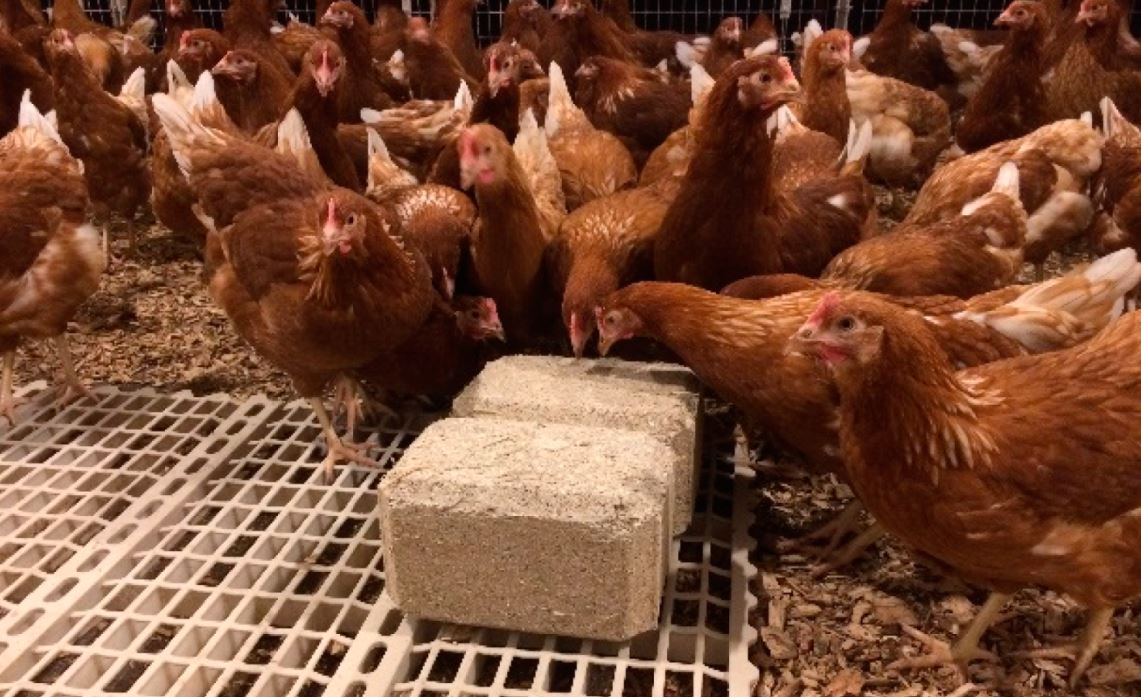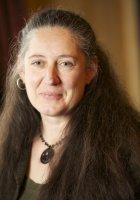Challenges
In Europe laying hens are kept in enriched cages, barn and free range systems, with free range systems now predominant in the UK. Pressure is increasing to ban beak trimming which is commonly used in the UK to prevent severe feather pecking in these systems, and instead focus on good management strategies including the supply of enrichments. Animal welfare scientists at Scotland’s Rural College (SRUC) carried out two longitudinal studies to compare different enrichments that could be used on real commercial farms. The behaviour of the birds was recorded based on a predefined ethogram to investigate their preferences for the different enrichments. Statistical analysis and associated interpretation of behaviour data in complex experimental designs is challenging.

Laying hens in a free range flock using pecking block enrichments
Acknowledgements
This work was done in collaboration with Vicky Sandilands (SRUC) and was funded under the Scottish Government's Strategic Research Programme for environment, agriculture and food.
BioSS Role
BioSS, in collaboration with SRUC researchers, designed 2 experiments to investigate different types of enrichments for laying hens on real farms. One of these examined 4 different commercially available scratch mats by allocating pairs of mat types to each of 24 enriched cages in a balanced design, so that each mat type was equally represented across banks, cage locations and cage sides. The other was carried out in 8 free range 16,000 bird flocks on 4 farms. Each shed was split into quarters, in which one of four types of enrichments was used as follows: bales and ropes, pecking blocks and ropes, pelleted feed scattered and ropes, ropes only, as ropes are considered the standard (control) enrichment. Comparison of different types of enrichments within the same bird groups (e.g. cages, quarters, flocks) increases the efficiency of these studies. Linear mixed models (LMM) and generalised linear mixed models (GLMM) were used to investigate whether more birds were at different enrichments and their behaviour. Additional statistical analyses relating to production and welfare were carried out: for the cage study egg quality was investigated and for the free range study impact on feather scores was examined.
Results
Counts of birds, and bird behaviour, were examined over time at the enrichments, and for the free range study away from the enrichments. The greatest proportion of birds in the enriched cages was observed for the largest mat type, but not when the GLMM analyses adjusted for mat type size, but the number of hens observed on mats was low, foraging was not significantly affected and very few eggs were laid on the mats. In contrast the free range study showed a clear preference for the 3 novel enrichments compared to ropes, but feather score was not significantly affected. Pecking blocks were used the most, but they are the most expensive enrichment to implement. While ropes were by far the cheapest enrichment to provide, behaviour at ropes was indistinguishable from behaviour away from any enrichments and thus did not sufficiently encourage foraging and other desirable behaviours. A balance between encouraging positive hen behaviour and cost to the producer needs to be taken into account in the practical use of any enrichment.

